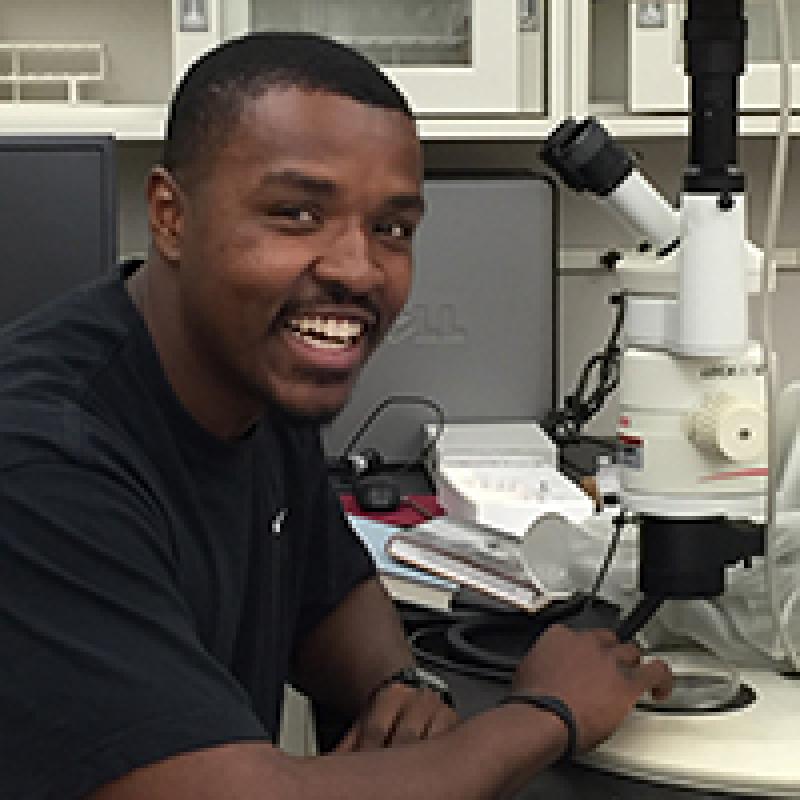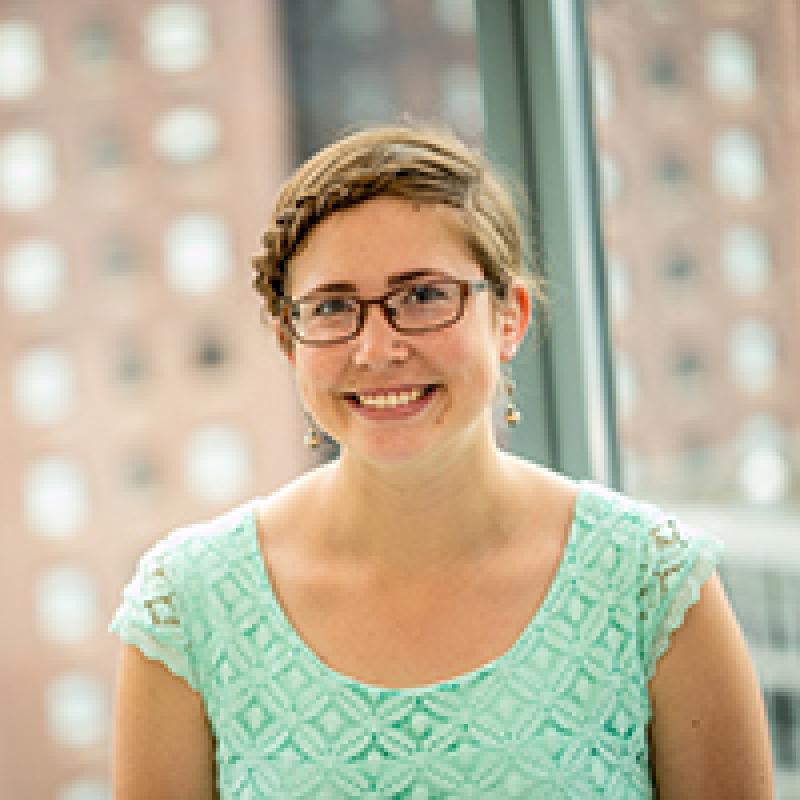Pursuing a passion for anthropology through the Summer Research Opportunities Program

Nearly 35 years ago, the Big Ten Academic Alliance founded the Summer Research Opportunities Program to connect underrepresented students from across the nation with valuable research experience at Ohio State and other Big Ten universities.
The program has since been dubbed “a gateway to graduate education” — and that’s not much of an exaggeration. More than 600 Summer Research Opportunities Program (SROP) alumni have gone on to earn a PhD, and thousands of others have completed graduate training.
This past summer, three students participating in SROP came to Ohio State to work with faculty mentors in the Department of Anthropology. For two months they conducted intensive research; participated in workshops and seminars on research skills, graduate education and professional development; and presented their research findings at both a campus and regional conference.
Though they explored vastly different subject matter, their takeaways were the same — an extremely impactful research experience and an appreciation for the high-quality teaching and scholarly activity at Ohio State.
Archaeology informs history

Craig Stevens has always been skeptical of the normative telling of history, which is why he decided to become an ethnoarchaeologist.
"Archaeology can be a means of informing history; challenging history because it’s more evidence-based … there are fewer layers of biases,” said Stevens, who graduated with a bachelor’s degree in anthropology from American University shortly after participating in SROP at Ohio State under the mentorship of Joy McCorriston, professor of anthropology.
Working with McCorriston, Stevens completed an archaeological study of burnt plant remains from 2,000-year-old cattle herder camps in Oman, a Middle Eastern nation on the coast of the Arabian Peninsula.
The plant remains survived hundreds of years because they were burned and carbonized, Stevens explained. He looked at different characteristics of the materials to determine what species of plant they came from, which — along with ethnographical work including interviews and historical texts — helped him make inferences and hypotheses about human action.
“We can see that they were using specific types of plants and trees for fires they were burning inside versus plants used for outside fires, which they could use to deter insects off their cattle, among other uses,” Stevens said.
Stevens has since received a Marshall Fellowship, which will fund his graduate studies at the Institute of Archaeology at University College London. He hopes to eventually obtain a PhD and pursue his research interests surrounding identity formation in the African Diaspora during the colonial period.
He said he is extremely grateful for SROP and McCorriston’s mentorship. “SROP is outstanding in its focus on providing opportunities to students of color,” Stevens said. “To be a graduate student in anthropology you need research experience, you can’t just have an idea. You actually have to prove you put the time and work in, and because of financial reasons, that is often harder for young students of color.”
“I knew I wanted to work with Dr. McCorriston over the summer, and SROP provided me an opportunity to actually make it happen,” he added. “I wouldn’t have been able to take on the costs and spend time out there if it wasn’t for this program.”
Anthropology meets economics

“There are two competing ideologies: one is the idea that people are always going to put their own self-interests first when it comes to money, and the other is the ideology that a lot of anthropologists have, which is that indigenous people always put their communities first,” Santiago said.
After analyzing dozens of research publications, economic reports and historical texts, he found that it’s not so black and white. Mesoamerican migrants “gained money for their own purposes, but they also reinvested it back into the community.”
Cohen and Santiago found that funds sent by migrants back to their households served not only as a resource that guaranteed survival for their loved ones, but as a way for migrants to create social identities that gave them status both home and abroad.
“It really highlights the diverse inner workings of indigenous societies,” Santiago said, noting how the text-focused nature of his research challenged him to hone his critical thinking skills.
“Economists are not looking at the same thing that anthropologists are, so when I was reading economic journals I had to read between the lines,” he said.
Santiago — who’s Puerto Rican — describes himself as someone who’s always loved different languages and been fascinated with culture. “I travelled a lot as a young person, so I was always experiencing different languages; different cultures; different ways of living, and that’s always fascinated me,” he said.
Participating in SROP at Ohio State gave Santiago the very glimpse he needed into academia.
“Just being able to be in an academic setting and conduct research with a mentor was tremendous for me,” Santiago said. “It allowed me to experience anthropology in a very different way — a very applied way, and it showed me the potential of what obtaining my PhD could do.”
The experience was just as impactful to Cohen. “Working with [Santiago] and being a part of SROP is one of the very best opportunities I’ve experienced as a faculty member,” Cohen said. “It is exciting to watch young scholars develop and to serve as a mentor to the next generation of researchers in our field.”
Santiago aims to graduate with a dual degree in Spanish and anthropology from NEIU in May 2019, and he’s already been busy applying to graduate programs.
“Ohio State was one of them, of course,” he said.
How Ohio State became home

Before graduating from Beloit College with a bachelor’s degree in anthropology and biology, Weinrich spent last summer at Distinguished University Professor Clark Larsen’s Bioarchaeology Research Laboratory studying human skeletal remains from the 16th century.
The 47 skeletons were excavated in 2013 from St. Catherine’s Island, Georgia, which was home to the prehistoric Guale population. Weinrich compared these skeletons with previously collected data from skeletons dating back to 1000 AD and found that dental health significantly worsened over time.
“Oral health drastically declined after European contact and is associated with dietary changes exacerbated by Spanish missionaries, including forced relocation and centralization of many Guale people,” explained Weinrich, adding that other characteristics of the skeletons suggest an general health decline in the Guale after Europeans came to the area.
“Working with Dr. Larsen on this project allowed me gain immense insight into the vast history of the Guale, which is far too often overshadowed and silenced by European history,” Weinrich said.
She presented her findings at the 2018 American Association of Physical Anthropologists annual meeting in Austin, Texas, in April, and spent her summer at the Staatssammlung für Anthropologie und Paläoanatomie in Munich collecting health data on a series of 100 skeletons from the early Medieval period.
“The SROP experience gave Weinrich extraordinary insights into the development of research and valuable preparation for a career in biological anthropology,” Larsen said.
